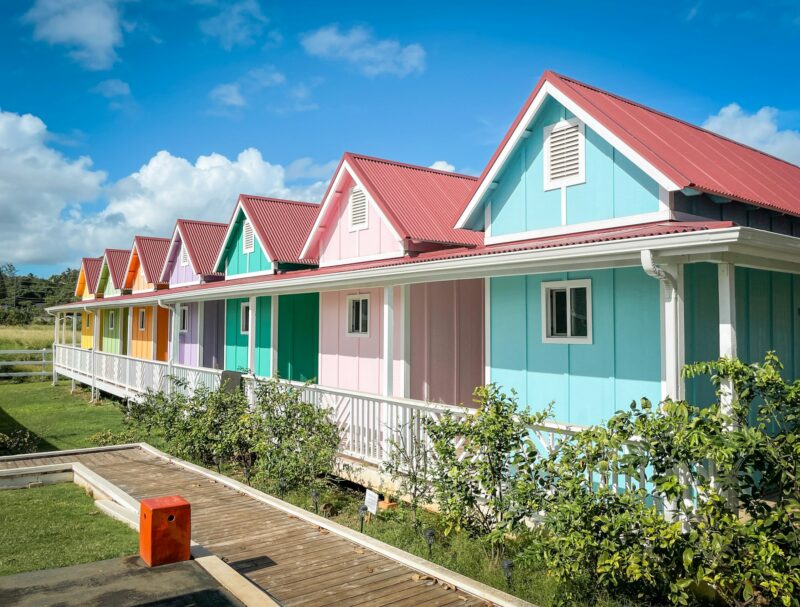How Fresh Paint Creates Lasting First Impressions
Your home’s exterior serves as the first thing visitors, neighbors, and potential buyers notice. A well-maintained exterior creates lasting impressions that can significantly impact your property’s perceived value and marketability. Among the most effective ways to enhance your home’s visual appeal, a fresh coat of paint stands out as both affordable and impactful.
Statistics show that strategic exterior painting can increase property values by 2-5%, making it one of the highest-return investments for homeowners. Beyond financial benefits, updated exterior colors create welcoming environments that reflect your style while protecting your home’s structural elements from weather damage.
This comprehensive guide explores how professional house painting enhances curb appeal, the key considerations for successful projects, and practical steps to achieve stunning results that make your property stand out in any neighborhood.
The Psychology Behind Visual Appeal
Color Psychology in Home Design
Colors trigger emotional responses that influence how people perceive spaces. Warm tones like soft yellows and earth-based hues create inviting atmospheres, while cool blues and grays convey sophistication and modernity. Understanding these psychological impacts helps homeowners select exterior paint colors that align with their desired aesthetic goals.
Research indicates that homes with well-coordinated color schemes sell faster than properties with outdated or mismatched exterior finishes. Neutral palettes typically appeal to broader audiences, while bold accent colors can highlight architectural features and create memorable visual interest.
Market Value Considerations
Real estate professionals consistently rank exterior appearance among the top factors affecting property valuations. Fresh exterior painting signals proper maintenance, suggesting that underlying structural elements receive similar attention. This perception translates directly into higher appraisal values and increased buyer interest.
Properties with recently painted exteriors typically spend less time on the market compared to homes requiring immediate cosmetic improvements. Buyers often view painting projects as immediate expenses, making move-in-ready properties more attractive options.
Strategic Color Selection Methods
Architectural Style Compatibility
Different architectural styles complement specific color palettes. Colonial homes traditionally feature classic combinations like white trim with navy or forest green siding. Modern designs often incorporate bold contrasts or monochromatic schemes that emphasize clean lines and geometric shapes.
Victorian properties can handle more elaborate color schemes, including multiple accent colors that highlight decorative elements. Ranch-style homes benefit from earth-tone palettes that complement horizontal lines and natural materials.
Environmental Factors
Geographic location and climate conditions influence optimal color choices. Lighter colors reflect heat effectively in warm climates, reducing cooling costs and preventing premature paint deterioration. Darker shades work well in cooler regions, absorbing solar heat and creating cozy appearances.
Local architectural traditions and neighborhood aesthetics should guide color selection processes. While personal preferences matter, maintaining harmony with surrounding properties helps preserve community character and property values.
Professional Quality Standards
Surface Preparation Importance
Proper surface preparation determines paint longevity and appearance quality. Professional contractors understand that thorough cleaning, scraping, and priming create foundations for durable, attractive finishes. Skipping preparation steps leads to premature peeling, uneven coverage, and costly repainting projects.
High-quality primers seal surfaces effectively, preventing moisture penetration and ensuring uniform color application. Different materials require specific primer types, making professional expertise valuable for complex projects involving multiple surface types.
Paint Quality Investments
Premium exterior paints contain higher concentrations of pigments and binders, delivering superior coverage and durability. While initial costs exceed basic paint options, quality products provide better color retention, weather resistance, and longer service life.
Professional-grade paints often include specialized additives that resist fading, mildew growth, and chalking. These features maintain appearance quality longer, reducing maintenance frequency and overall lifecycle costs.
Timing and Planning Considerations
Seasonal Optimization
Weather conditions significantly impact painting project success. Spring and fall typically offer ideal temperature ranges and humidity levels for exterior painting. Extreme temperatures, high humidity, or precipitation can compromise paint adhesion and drying processes.
Professional contractors schedule projects during optimal weather windows, ensuring proper curing and long-term performance. Planning allows flexibility to adjust schedules based on weather forecasts and seasonal demand.
Project Scope Management
Comprehensive exterior painting projects involve multiple components beyond siding application. Trim work, shutters, doors, and architectural details require careful attention to create cohesive finished appearances. Color coordination between these elements contributes significantly to the overall visual impact.
Establishing clear project scopes helps manage expectations and budgets effectively. Detailed contracts should specify surface preparation methods, paint specifications, and cleanup procedures to ensure satisfactory results.
Maintenance and Longevity
Inspection Schedules
Regular exterior inspections identify potential issues before they require extensive repairs. Annual walkarounds should focus on areas prone to moisture exposure, such as window trim, door frames, and foundation connections. Early detection of peeling or cracking allows targeted touch-ups that prevent larger problems.
Professional maintenance programs can extend paint life significantly through timely interventions and preventive treatments. These services often cost less than complete repainting while maintaining optimal appearance standards.
Protection Strategies
Proper ventilation around painted surfaces prevents moisture buildup that leads to paint failure. Ensuring adequate drainage away from foundations and maintaining caulk seals around windows and doors protects both paint and underlying materials.
Landscape management also affects paint longevity. Keeping vegetation trimmed away from exterior walls reduces moisture retention and prevents physical damage from branches and thorns.
Investment Returns and Property Value
Professional exterior painting represents one of the most cost-effective methods for increasing property value and market appeal. Success depends on careful planning, quality materials, and skilled execution that addresses both aesthetic and protective requirements.
Working with experienced contractors ensures access to industry knowledge, quality materials, and proven techniques that deliver lasting results. Professional teams understand local climate challenges, building codes, and aesthetic preferences that influence project outcomes.
For homeowners ready to enhance their property’s curb appeal through professional services, consulting with qualified contractors at https://www.capitalelite.ca/ provides valuable insights into project possibilities and investment returns. Quality exterior painting creates lasting impressions that benefit both current enjoyment and future resale opportunities.

